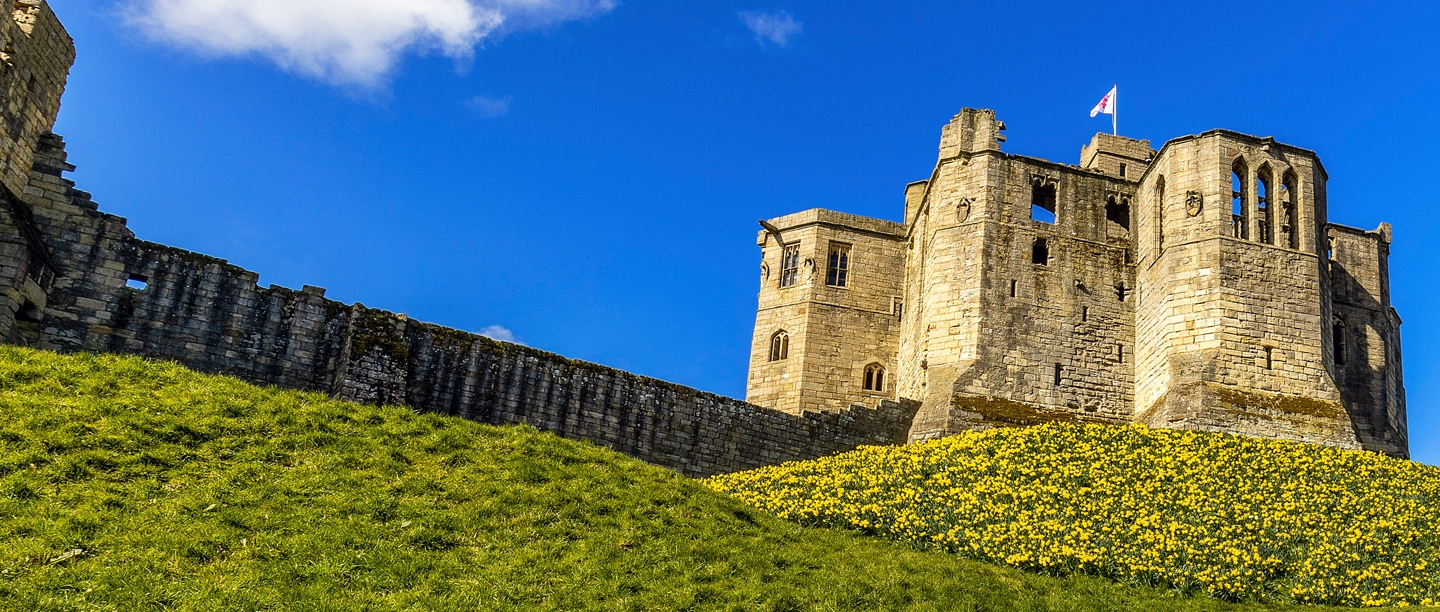1. Celebrate the coronation
On Saturday 6 May 2023, millions of people around the globe will come together to mark the historic Coronation of His Majesty The King and Her Majesty The Queen Consort, in a ceremony rooted in England’s traditions. Many previous monarchs have had strong associations with English Heritage sites, and their stories are woven into the history of these glorious reminders of royalty past. Discover tales of six influential royal visits to our sites, and find out about the castles most strongly connected to English kings. We also look back to the reigns of the two previous King Charles’ and the marks they left on our nation.
Find out more2. Join us for a truly unique May half term
This May half-term we will provide lots of hands-on activities and family fun. Queen Victoria and Albert will be enjoying a day at the fair at Osborne, with splendid sideshows and traditional fairground rides. At Stonehenge join us for The Big LEGO® Brick Build as we attempt to build a replica Stonehenge out of LEGO® bricks. There will be the chance to get close to the action and watch rival knights compete at Pendennis Castle's Knights’ Tournament, or encounter some of history’s most famous pirates at Whitby Abbey. At Dover Castle we will be bringing the atmosphere and action of the 1940s to life at our celebrated WWII Weekend.
Our Kids Rule! events will also be returning this half-term at 22 of our sites. Get ready for a right royal knees-up and celebrate King Charles III’s coronation with merry monarchs, a variety of activities and plenty of fun.
Find out more3. Explore the history of meadows
As part of the Majesty King Charles III’s coronation celebrations, we've pledged to enhance and create one hundred meadows at our sites. Meadows have been a part of the English farming landscape for over a thousand years, and this initiative combines two of His Majesty’s passions – nature and heritage.
Meadows have long provided valuable habitats for rare wildflowers and important pollinators such as butterflies, moths and bees. They were also noted as a distinct and valuable category of land in the Domesday survey of 1086. Read our article to discover meadows’ connection to our agricultural and social history, and how they provide an important historic settings for many of our sites.
Find out more4. Visit one of our top tearooms
Nothing completes a fun-filled day out quite like delicious food or a restorative beverage. Our cafés and tearooms serve up soups made from produce grown in our kitchen gardens, cakes baked using historical recipes and as many locally-sourced ingredients as possible. We’ve compiled together a list of our favourite cafés and tearooms across the country.
Check the property pages or an English Heritage handbook to find out more about each of our individual site’s catering options.
Find out more5. Learn about the Pioneers of Nursing
In early medicine, nurses were often the unsung heroes, working behind the scenes to ensure the running of an orderly and spotlessly-clean ward and fulfilling the day to day care of patients. In honour of International Nurses’ Day, May 12, why not learn about the history and heroes of this noble profession.
Several of our blue plaques are dedicated to people who helped to revolutionise nursing: Arguably the most famous nurse, Florence Nightingale has a plaque at the site where her Mayfair home once stood. Other plaques honour Ethel Gordon Fenwick, who campaigned successfully to raise the status and standards of nursing, and Mary Seacole, pioneering nurse and a heroine of the Crimean War. A blue plaque outside London Hospital in Whitechapel is dedicated to Edith Cavell, pioneer of modern nursing in Belgium and a heroine of the First World War. She took sole charge of the St Gilles hospital, which became a centre of resistance and hid Allied soldiers in the hospital, giving them false papers and helping them to escape German-occupied Belgium.
Find out moreThe month in history
- Bram Stoker’s horror novel Dracula was published on 26 May 1897. Stoker visited Whitby in 1890 and found inspiration for the name of his famous vampire and atmospheric locations for the novel, including Whitby Abbey.
- Poet Alexander Pope was born on the 21 May 1688. He is famous for his classic poetry and literature, but less well known is his impact on historical garden design; he proposed plans for gardens at Chiswick House and Marble Hill in south west London. A blue plaque marks his time living at Mawson’s buildings in Chiswick Lane South.
- The landscape and portrait painter Thomas Gainsborough was born on 14 May 1727. His portrait of Mary, Countess Howe can be seen at Kenwood, alongside famous works by Vermeer, Rembrandt and Reynolds.
- The British evacuation of soldiers from Dunkirk, also known as Operation Dynamo, began on 26 May 1940. The rescue was co-ordinated by Vice Admiral Bertram Ramsay from the tunnels beneath Dover Castle, a total of 338,226 troops were evacuated by almost 1000 ships, many of them civilian boats. Find out more about Operation Dynamo.
- The monk and scholar, The Venerable Bede, died on 26 May 735. Bede wrote about St Hild of Whitby, who, according to legend, banished a plague of snakes from the headland there with divine help. Learn more about the legend of Saint Hild in this short film.
More to Explore
-

Inspire Me
Our historic sites offer something for everyone. Here we have gathered some of our favourite features, events and things to do to inspire your next visit.
-

THE ENGLISH HERITAGE PODCAST
Join presenter Charles Rowe as we bring the history of our sites to life with news, views and expert interviews across over 150 episodes.
-

Become a member today
Enjoy unlimited access to hundreds of historical places with an annual membership. Plus there's free entry for up to six children. Memberships start from £53 a year.

